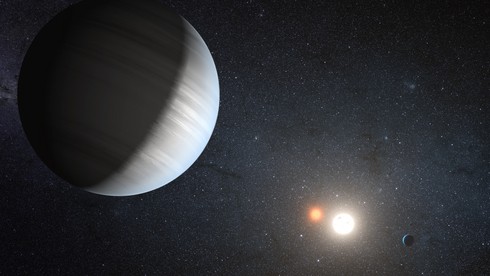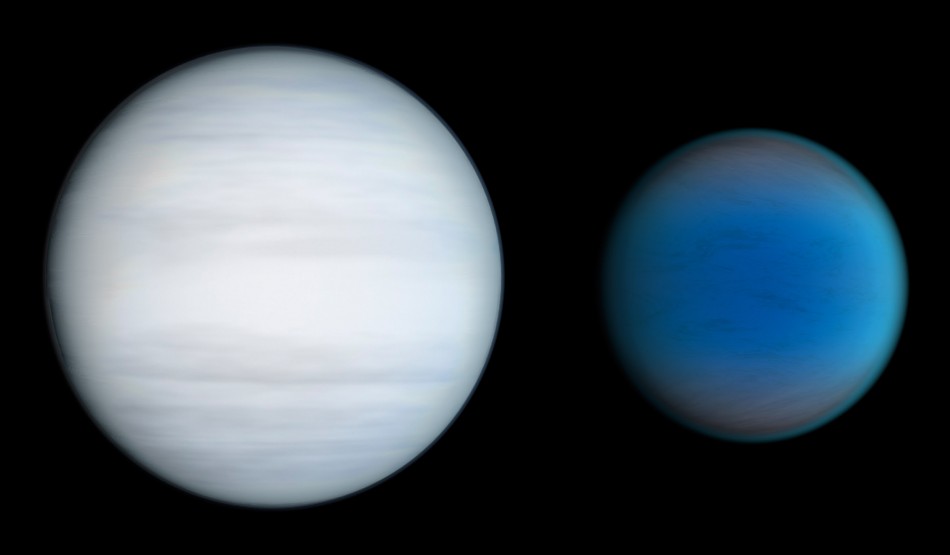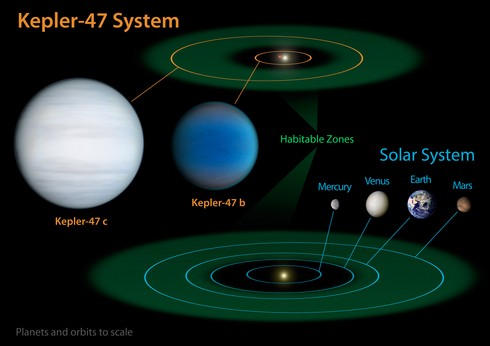Nasa Scientists Find Multiple Transiting Planets Orbiting Two Suns [STUNNING PHOTOS]
For the first time, scientists have discovered multiple transiting planets revolving around two suns.
Scientists from Nasa and the University of California in Santa Cruz, who analysed data from the Kepler space telescope, found two planets orbiting two stars, known as a circumbinary planetary system.
"The presence of a full-fledged circumbinary planetary system orbiting Kepler-47 is an amazing discovery," said Greg Laughlin, professor of Astrophysics and Planetary Science at the University of California in Santa Cruz.
The study found that the two planets, Kepler-47b and Kepler-47c, orbit a pair of stars. Scientists found that among the two stars, one is quite similar to our sun in size, but only 84 percent bright. The second star is just one-third of the size of our sun.
The inner planet, Kepler-47b, is three times the radius of earth. It orbits the pair of stars in less than 50 days. The Kepler 47-b planet cannot be directly viewed because it is very close to the sun compared to other planets in that system. The planet receives more sunlight, which causes destruction of methane in its super-heated atmosphere. Kepler-47b is the smallest known transiting circumbinary planet.
The outer planet, Kepler-47c, is thought to be a gaseous giant slightly larger than Neptune. It orbits its host pair every 303 days, placing it in the so-called "habitable zone," the region in a planetary system where liquid water might exist on the surface.
"Unlike our sun, many stars are part of multiple-star systems where two or more stars orbit one another. The question always has been -- do they have planets and planetary systems? This Kepler discovery proves that they do. In our search for habitable planets, we have found more opportunities for life to exist," said William Borucki, Kepler mission principal investigator at Nasa's Ames Research Center.
According to Laughlin, these planets are very difficult to form using the currently accepted paradigm. He believes that theorists will be going back to the drawing board to try to improve the understanding of how planets are assembled in dusty circumbinary disks.



© Copyright IBTimes 2024. All rights reserved.





